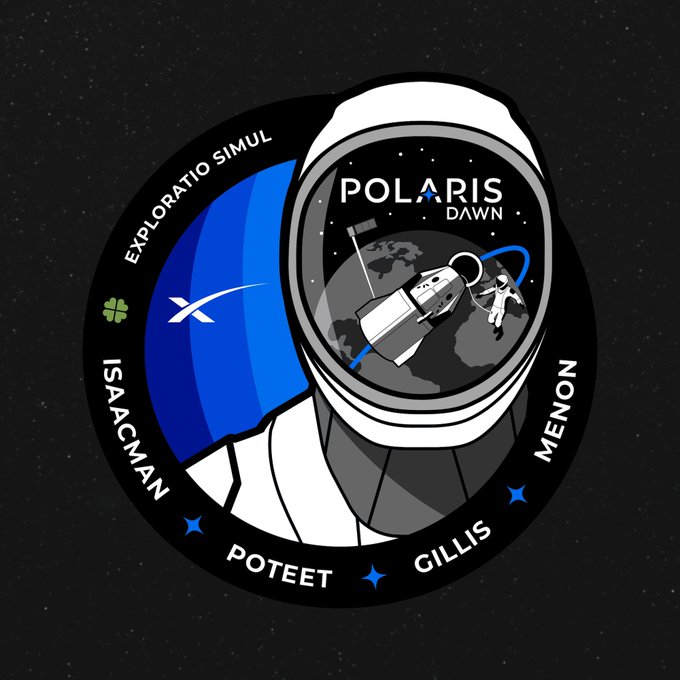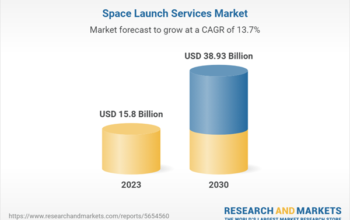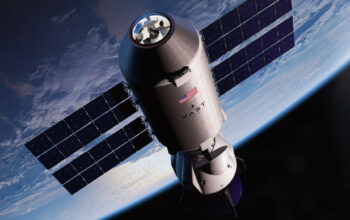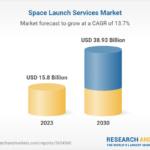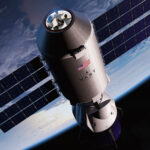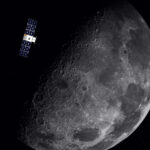The first of the planned Polaris Program's three human spaceflight missions, dubbed Polaris Dawn, recently announced 38 science and research experiments that the crew and SpaceX will conduct throughout the mission. The selected projects are designed to advance both human health on Earth and on future long-duration spaceflights.
Polaris Dawn and SpaceX will collaborate with 23 institutions on the selected experiments, such as the Translational Research Institute for Space Health (TRISH), University of Texas, Houston, University of Augusta, University of Colorado Boulder, Baylor College of Medicine, Medical University of South Carolina, Pacific Northwest National Laboratory, Weill Cornell Medicine, Johns Hopkins University Applied Physics Laboratory, and the U.S. Air Force Academy.
The Polaris Dawn crew will be the first crew to test Starlink laser-based communications in space, providing valuable data for future space communications system necessary for missions to the Moon, Mars and beyond.
Source: Polaris Program

Polaris Dawn Mission will include 38 Science and Research Experiments
Polaris Dawn, the first of the Polaris Program's three human spaceflight missions, announced today the extensive suite of science and research experiments the crew and SpaceX will conduct throughout the mission. The selected projects are designed to advance both human health on Earth and on future long-duration spaceflights.
“The mission profile of Polaris Dawn affords us some great opportunities to expand our collective knowledge about the human body in space and associated applicability here on Earth. Our science and research agenda will enhance the body of knowledge for future long-duration spaceflight which will take us back to the Moon and on to Mars; as well as progress our knowledge and understanding for humankind here on Earth. The Polaris Dawn team along with the exceptional science and research team at SpaceX cast a wide net to find the best experiments to fly with us. We greatly appreciate all of the submissions and enormous support of the work. Polaris Dawn is the first mission in the Polaris Program and our goal is to continue to find the best research out there for our future spaceflights,” stated Jared Isaacman, mission commander.
SpaceX is targeting no earlier than March 2023 for Falcon 9's launch of the Polaris Dawn mission from Launch Complex 39A at NASA's Kennedy Space Center in Florida. Over the course of five days, Dragon and the Polaris Dawn crew will endeavor to travel to 1,400 km – the highest Earth orbit ever flown – and attempt the first-ever commercial spacewalk. Many of the selected research projects take advantage of this unique mission profile, including the relatively high-radiation levels due to the high-altitude orbit and exposure to hard-vacuum during the spacewalk. Such projects include but are not limited to:
- Use of ultrasound to measure changes to the eye's structure in microgravity; track organ blood flow patterns to monitor nutrient absorption, toxin filtration, and blood clot prevention; and to test innovative just-in-time training modules to allow successful use of this tool without extensive training.
- Wearing a contact lens embedded with microelectronics that will allow the crew to continuously monitor changes in the shape and pressure of the eye, a first for a human spaceflight mission. Collected data will contribute to the understanding of spaceflight associated Spaceflight Associated Neuro-Ocular Syndrome (SANS), a condition that can cause degraded vision and poses a risk for human performance during a mission.
- Investigating the effects of microgravity, magnetic, and fungal influences on root growth of low-Earth orbit germinating plants to help inform plant growth procedures for food viability and sustainability in lunar or Martian gravitational environments as well as deep-space exploration. Additionally, the research will provide actionable physical and genetic data relative to plant growth utilizing gravitropism, fungal volatiles, and magnetic fields to improve food production here on Earth.
- Determining how the body processes common pharmaceuticals in orbit to continue testing theoretical evidence that space changes the efficacy and potential safety of these drugs. The effects of spaceflight on the stability of pharmaceuticals will also be evaluated;
- Expanding on-orbit medical capabilities, including the development of cardiopulmonary resuscitation (CPR) procedures for use in the Dragon spacecraft, and demonstrating the use of a fiberoptic camera to image and better understand how spaceflight fluid shifts may affect airway management in a medical emergency;
- Brain mapping via a portable MRI within hours of splashdown, giving unique insight into how the brain is affected by microgravity and how it readapts, contributing to studies of the brain's involvement in Spaceflight Associated Neuro-Ocular Syndrome (SANS);
- Validation of a continuous glucose monitoring device to increase access to space for a more diverse population of future astronauts; and
- Measurement of the high-energy neutron radiation environment to which the crew will be exposed to help inform and improve space radiation exposure prediction models.
Polaris Dawn and SpaceX will collaborate with 23 institutions on the selected experiments, such as the Translational Research Institute for Space Health (TRISH), University of Texas, Houston, University of Augusta, University of Colorado Boulder, Baylor College of Medicine, Medical University of South Carolina, Pacific Northwest National Laboratory, Weill Cornell Medicine, Johns Hopkins University Applied Physics Laboratory, and the U.S. Air Force Academy. For a full list and description of the selected science & research experiments and associated institutions, visit Polaris Dawn's Science and Research site. While each experiment was selected for inclusion in the mission profile, additional testing and qualification requirements are underway. A final list of approved-to-fly experiments will be published closer to launch.
- Kate Calvin, NASA's chief scientist and senior climate advisor
- Susie Perez Quinn, NASA's chief of staff
- Tahani Amer, program executive, NASA Earth Science Division
- Laura Lorenzoni, program scientist, ocean biology and biochemistry, NASA Earth Science Division
- Mike Falkowski, program scientist, terrestrial ecology, NASA Earth Science Division
The NASA Hyperwall will be a main attraction at the U.S. Center. NASA scientists will provide two presentations per day, showing how NASA's global leadership in climate science and research helps model and predict ocean health, heat waves, wildfires, hurricanes, floods, and droughts. The full list of NASA presentations during the conference is available online.
Climate adaptation and mitigation efforts cannot succeed without robust climate observations and research. NASA's fleet of satellites and instruments observe how the planet is changing and measure key climate indicators, such as rising sea level, intensity of precipitation, and greenhouse gases in the atmosphere.
NASA is currently working to launch the next generation of Earth observing satellites- the Earth System Observatory, which will provide a 3D, holistic view of Earth to help us better understand what our planet's changes mean for humanity. NASA is also designing an Earth Information Center, which will allow people to see how our planet is changing and provide easy-to-use information and resources that support decision makers to mitigate, adapt and respond to climate change.


